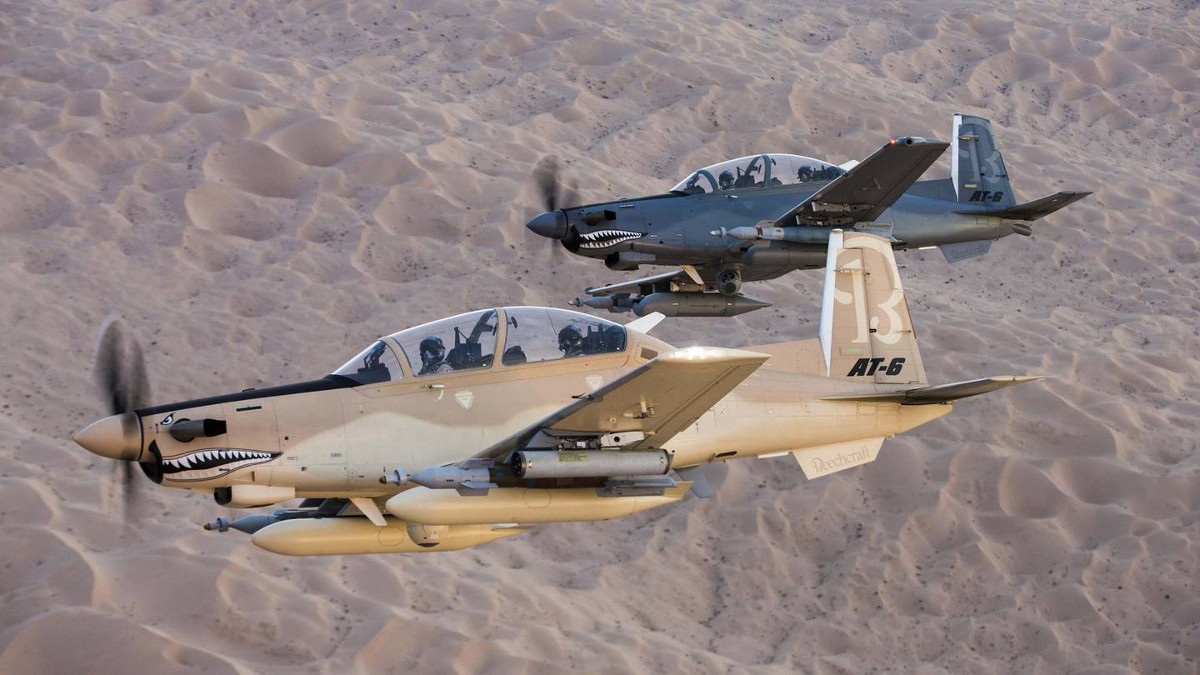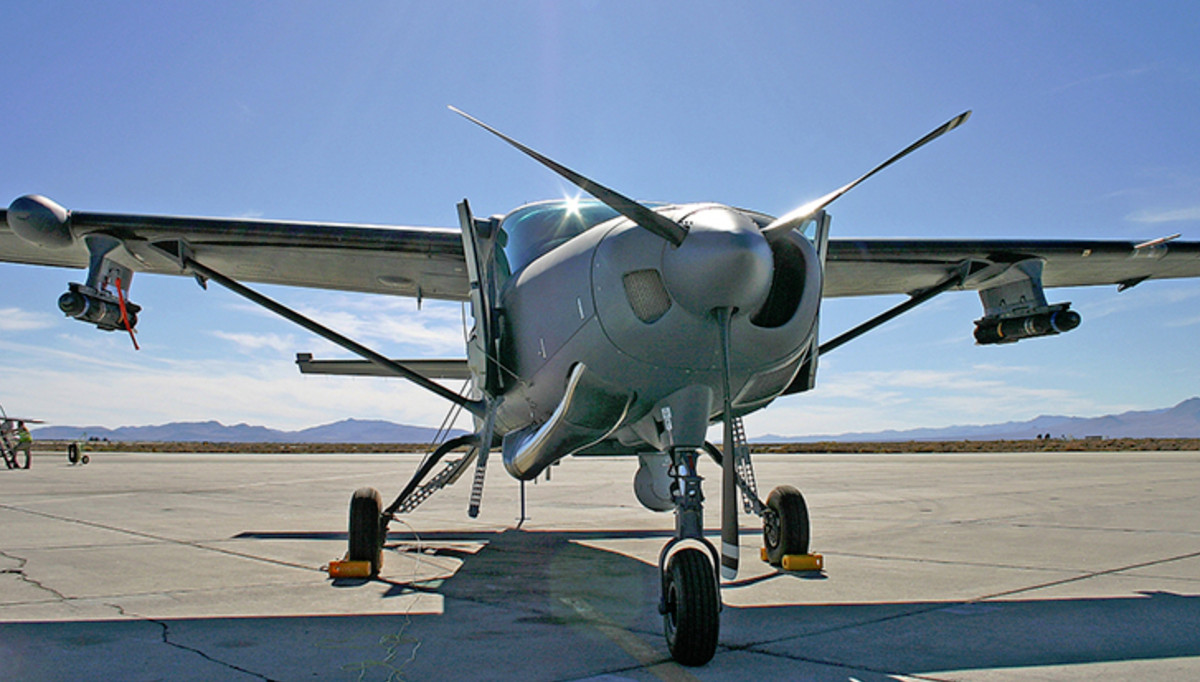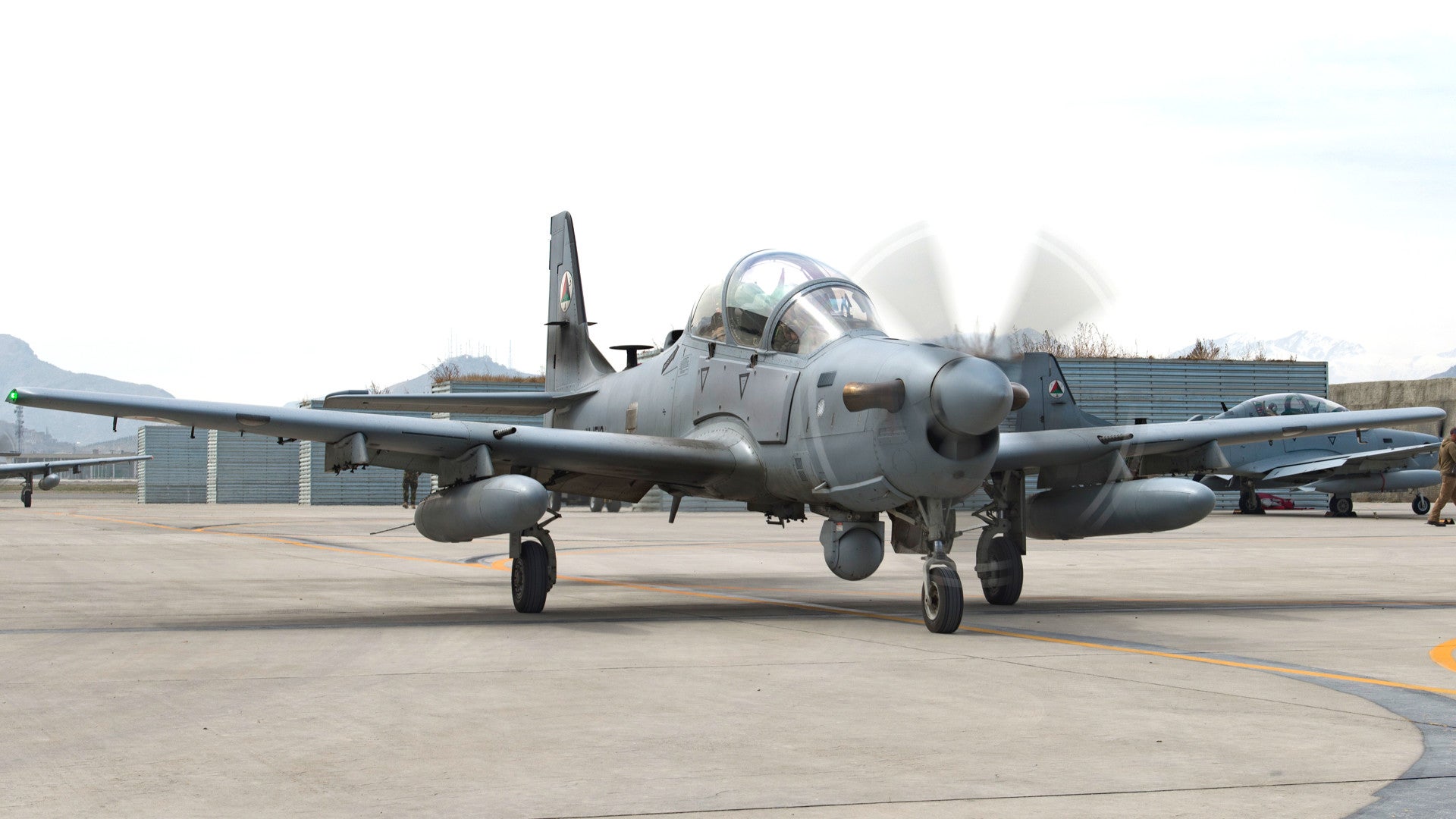As the U.S. Air Force plods along with its light attack aircraft experiment, commonly known as OA-X, the service is reportedly looking for ways to speed up the process and begin buying actual airplanes. At the same time, senior officials have given somewhat contradictory descriptions of the project’s present status and, more importantly, have indicated that there are still no formal requirements in place for this type of aircraft.
On March 14, 2018, during a hearing before the Defense Subcommittee of the House Appropriations Committee, Secretary of the Air Force Heather Wilson told members of Congress that it might be possible to reprogram funds in order to speed up purchases of light attack aircraft. The month before, she had revealed plans to set aside $2.4 billion in spending over the next five years for the program, but this wouldn’t begin until at least the 2020 fiscal year.
“The challenge I’ve given [the team] is: ‘I’m not going to specify how you do this. I want you to tell me the best option for how to go do it given that . . . I want this as quickly as [possible],” U.S. Air Force Lieutenant General Arnold Bunch, Jr., the top uniformed military deputy in Office of the Assistant Secretary of the Air Force for Acquisition, told Aviation Week in separate interview earlier in March 2018. “The sky is the limit.”
Bunch said the service was exploring ways to move OA-X from an experimental demonstration into a procurement plan as early as some time in 2019. It is possible that the Air Force could use one of many rapid purchasing mechanisms to either issue a sole-source contract to its preferred manufacturer or establish some sort of other partnership with them following its next round of light attack aircraft tests, which are now set to run between May and July 2018 at Holloman Air Force Base in New Mexico. At present, the Air Force has said only Textron’s AT-6 Wolverine and SNC and Embraer’s A-29 Super Tucano will take part in those experiments.
Using any of those tools could invite protests from other companies hoping to sell their particular plane to the U.S. Air Force. A heavily politicized contract dispute helped scuttle the service’s last attempt to purchase light attack aircraft and nearly tanked a companion program to supply A-29s to Afghanistan.
But at an event the private Air Force Association’s Mitchell Institute hosted on March 14, 2018, U.S. Air Force General Ellen Pawlikowski, head of Air Force Materiel Command, seemed to offer a different view. She said that the service just wanted to be prepared to contemplate buying any light attack aircraft when it drafted its proposed budget for the 2019 fiscal year and that the 2020 timeframe still seemed most likely.
She also suggested her own novel approach to potentially speed up the project, saying that the Air Force might want to actually embrace “throw-away culture” and buy only a small number of light attack aircraft with plans to operate them just for a short period before purchasing another, new fleet. According to her, at least in theory, this might help reduce costs since the service wouldn’t have to spend money to establish a more robust logistics and sustainment pipeline to support the planes.
It’s not clear how viable that plan would actually be, since it could easily require significant funds to hire contractors to help support the aircraft during any actual operations. It would almost certainly end up forcing the Air Force to source at least some amount of spare parts and other necessary supplies straight from the manufacturer, potentially in small batches at a high cost. There are notable examples at home and abroad of similar concepts leading to serious problems and low availability of the systems in question and Pawlikowski herself said that she wasn’t necessarily aware of an instance in which such an arrangement had actually worked out in the past.

It’s also unclear why the Air Force would even need to consider using such as convoluted and potentially risky approach with regards to a future light attack aircraft. The service already has well established sustainment chains for the T-6 Texan II trainer, from which Textron derived the AT-6, and the A-29, which it already operates in order to help train allied pilots.
The bigger issue, as it has been for some time now, seems to be that the Air Force continues to be unable to reach a consensus about purchasing light attack aircraft. This is despite there being a large body of evidence to support the idea that these aircraft could provide a low-cost alternative to high-performance aircraft in low threat environments, freeing those other aircraft up for missions that actually require their high-speed and advanced capabilities, a concept The War Zone has described in detail in the past.
As yet, there is no indication that the Air Force has approved formal requirements for an OA-X type aircraft or sought to have the Pentagon’s Joint Requirements Oversight Council validate those needs, two steps critical for establishing a formal procurement program. General Pawlikowski warned that the project risked falling into the so-called “Valley of Death,” a term used to describe programs that get stuck in a perpetual experimental phase and never seem to go anywhere, often ending up cancelled. Lieutenant General Bunch seemed to echo similar concerns in his interview with Aviation Week.

“What I don’t want to do is go buy airplanes and have them sitting on the ramp, so we’ve got to sync everything up,” he said. “I can’t just flip a switch and go buy the airplanes. We’ve really got to understand the concept of operations.”
All of this continues to prompt questions about how committed the Air Force truly is to the project, despite its repeated public support for the concept. In her remarks, Pawlikowski called the latest light attack experiment “a great success” and “our first attempt on that scale” to put a commercial-of-the-shelf aircraft of that type into service quickly.
This, of course, isn’t true. In 2009, the Air Force began laying the groundwork for the purchase of approximately 100 such aircraft as part of what it called the Light Attack / Armed Reconnaissance (LAAR) program. It formally cancelled that effort in February 2012, ostensibly due to a budget crunch resulting from caps on defense spending in the 2011 Budget Control Act, a process known as sequestration.
Even if it hadn’t already run through this exact process once before, the service would still have a mountain of experience over the past decade of developing and procuring light attack aircraft. Just in March 2018, the Air Force awarded Orbital ATK a contract worth more than $86 million for AC-208 Eliminators, a light attack aircraft based on the Cessna Caravan, all of which will go to Afghanistan’s Air Force.

It could also leverage similar knowledge from programs that other services have run in the same time frame. As we at The War Zone have noted before, the latest OA-X experiments are the sixth time various branches of the U.S. military, including the Air Force, have specifically tested the AT-6, the A-29, or both aircraft at once since 2007.
None of this is to suggest that it isn’t a laudable for the Air Force to want to speed up the light attack program. At the same time, though, it is hard to understand how that would be at all possible when it can’t seem to make up its mind about what it might want the planes to do or how many it might actually buy, issues that are themselves difficult to comprehend given the service’s own expansive knowledge base on the topic.
Whether the service is deliberately slow-rolling the process or not, it will need to address these more fundamental issues before pushing ahead with any purchases, or risk ending up with aircraft, no matter how potentially useful, that it still has no real capacity to employ.
Contact the author: joe@thedrive.com
